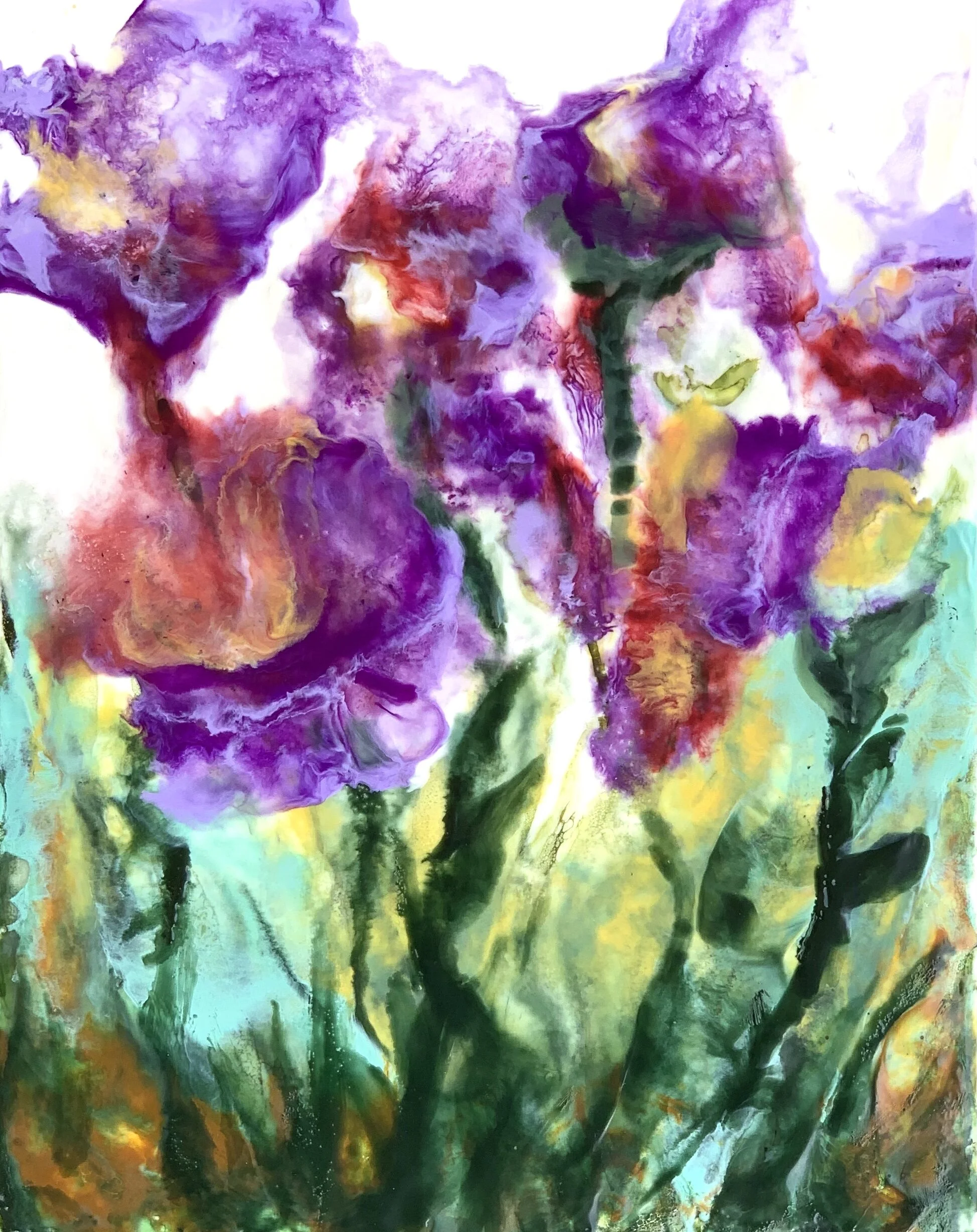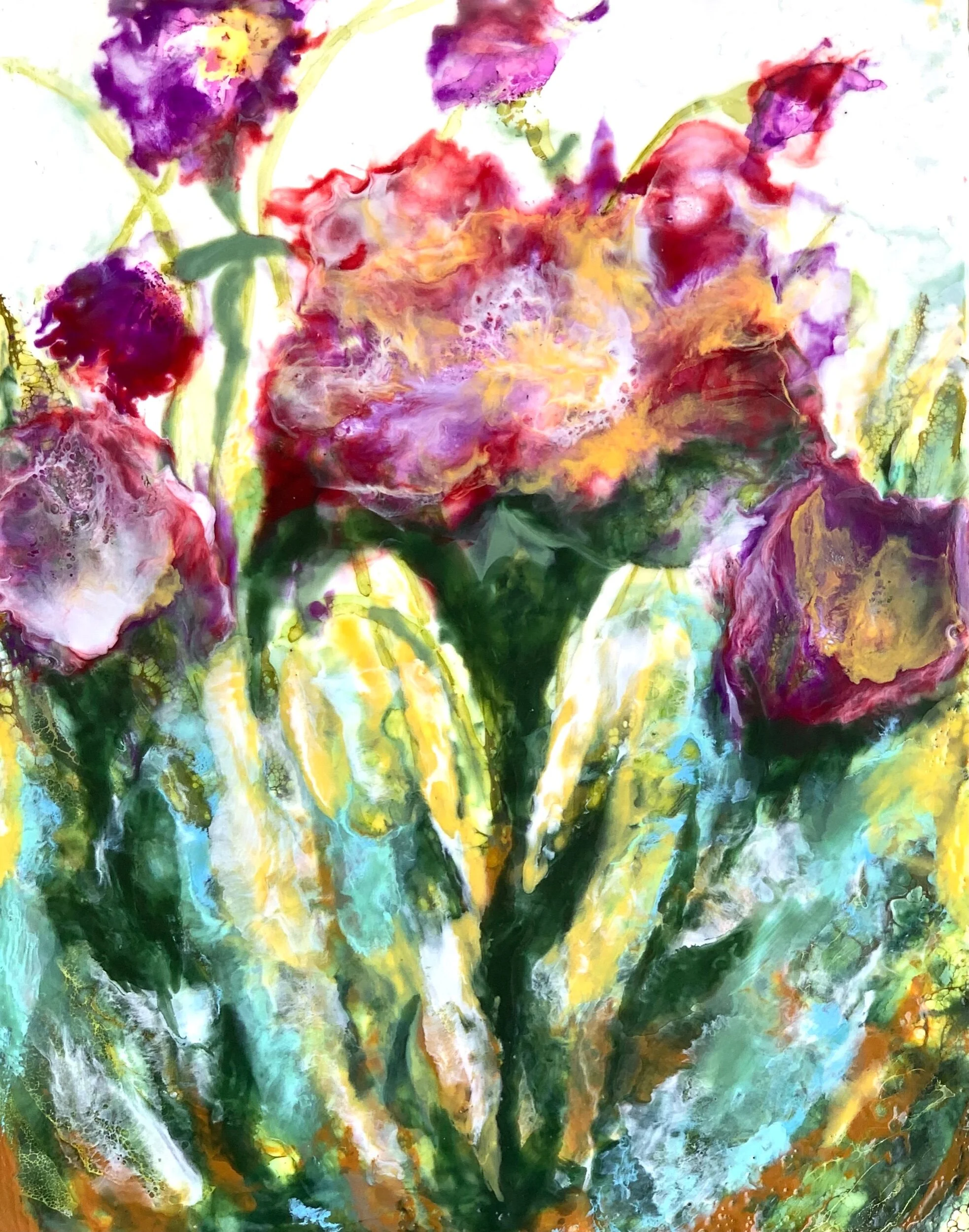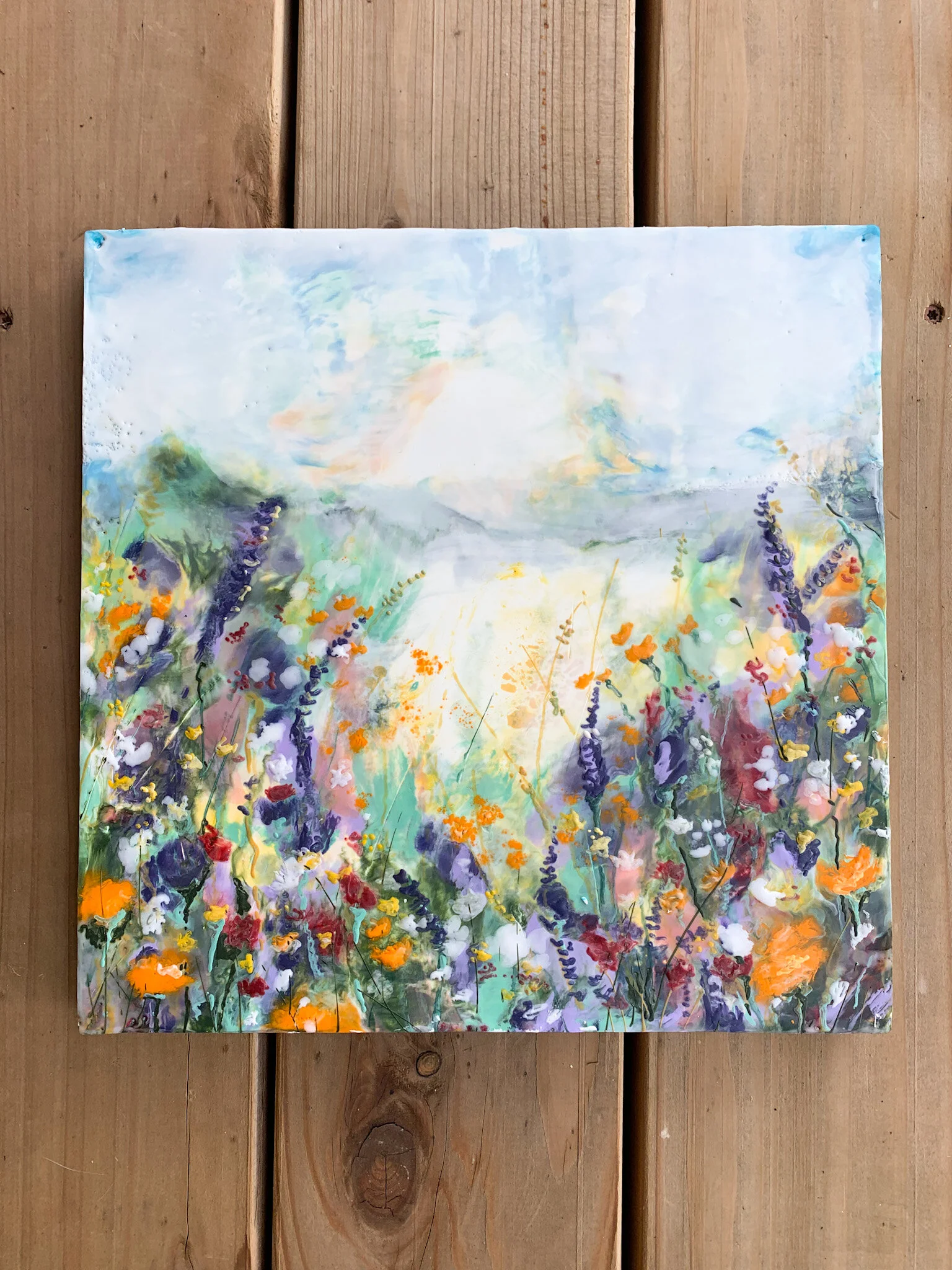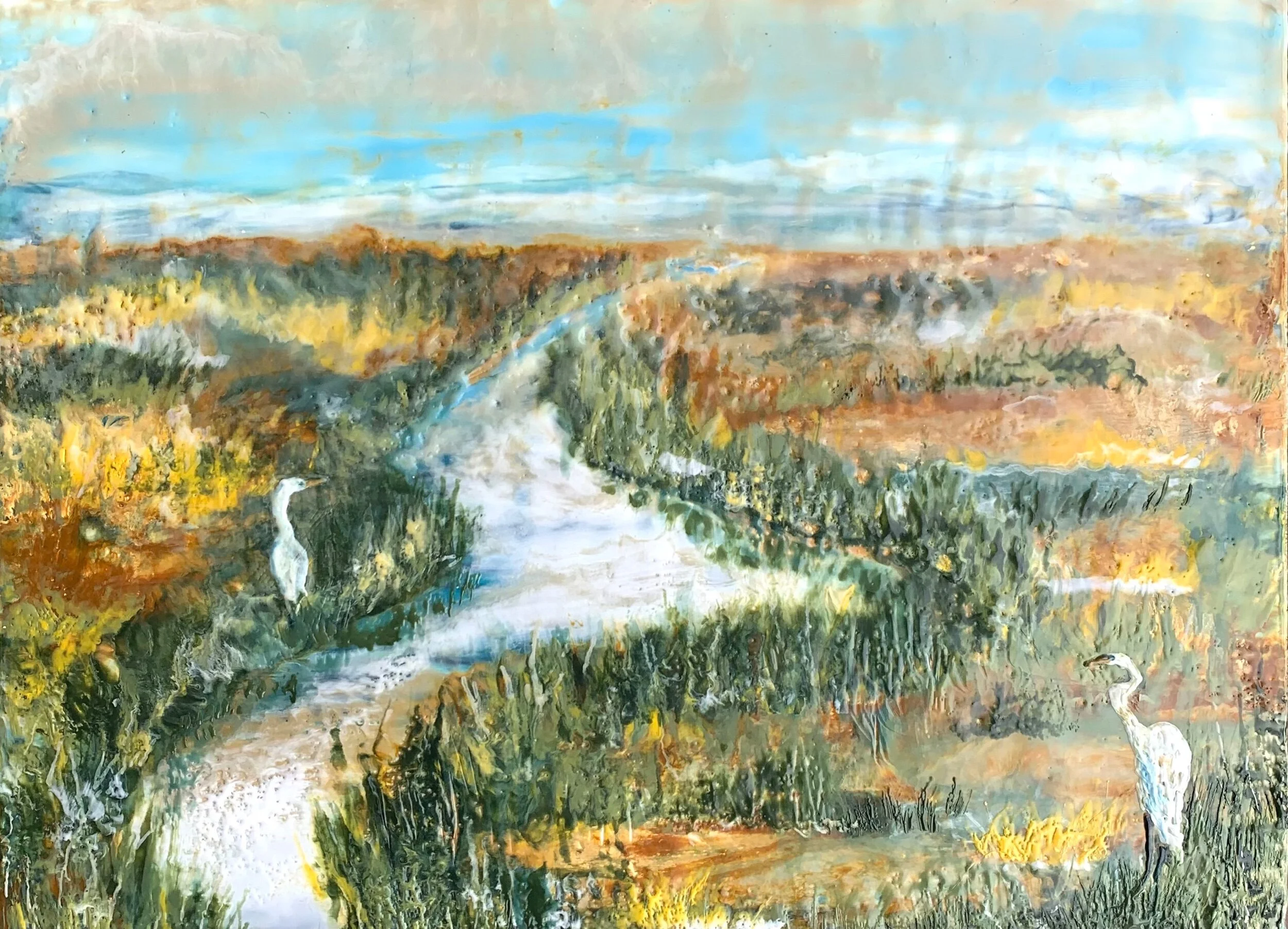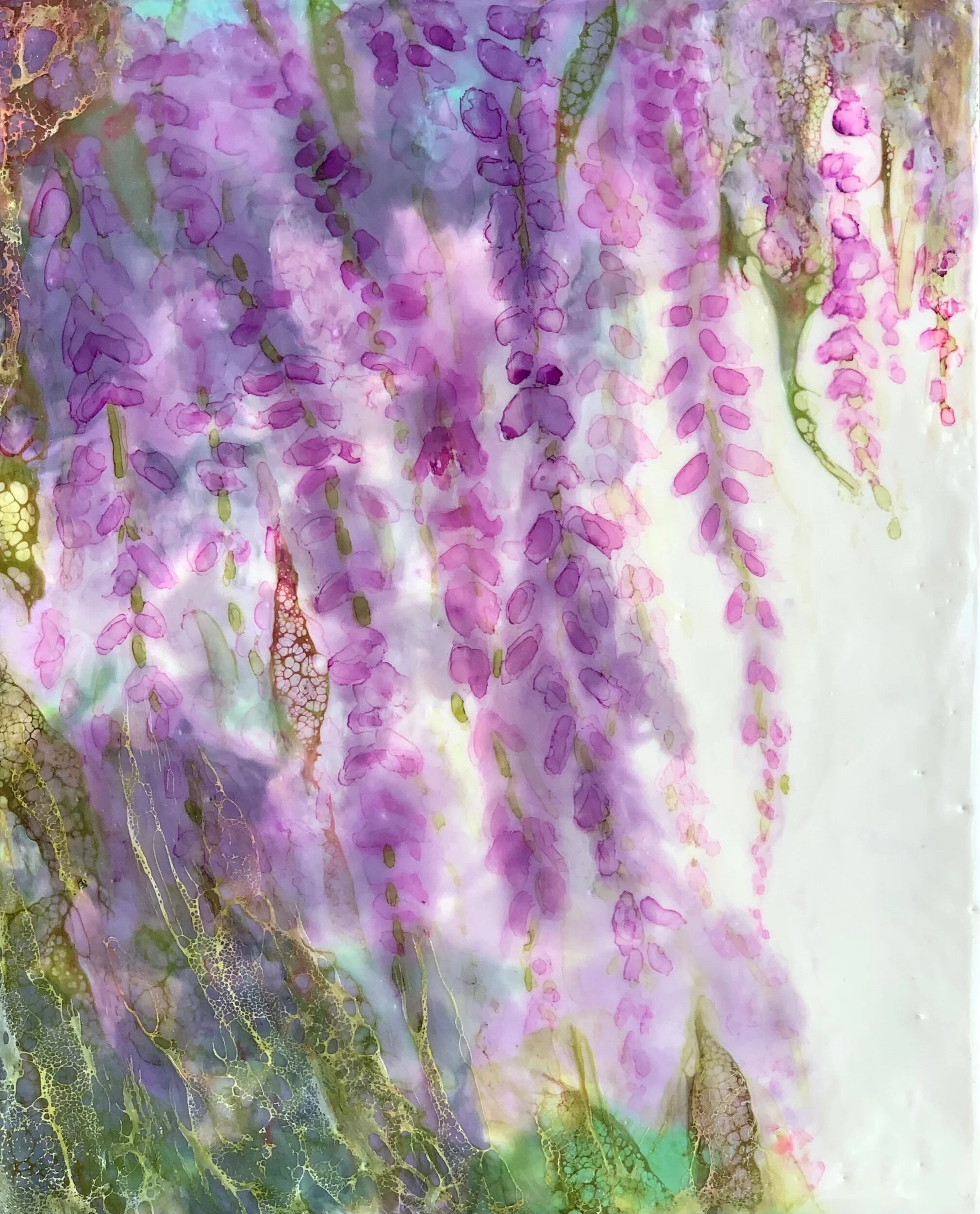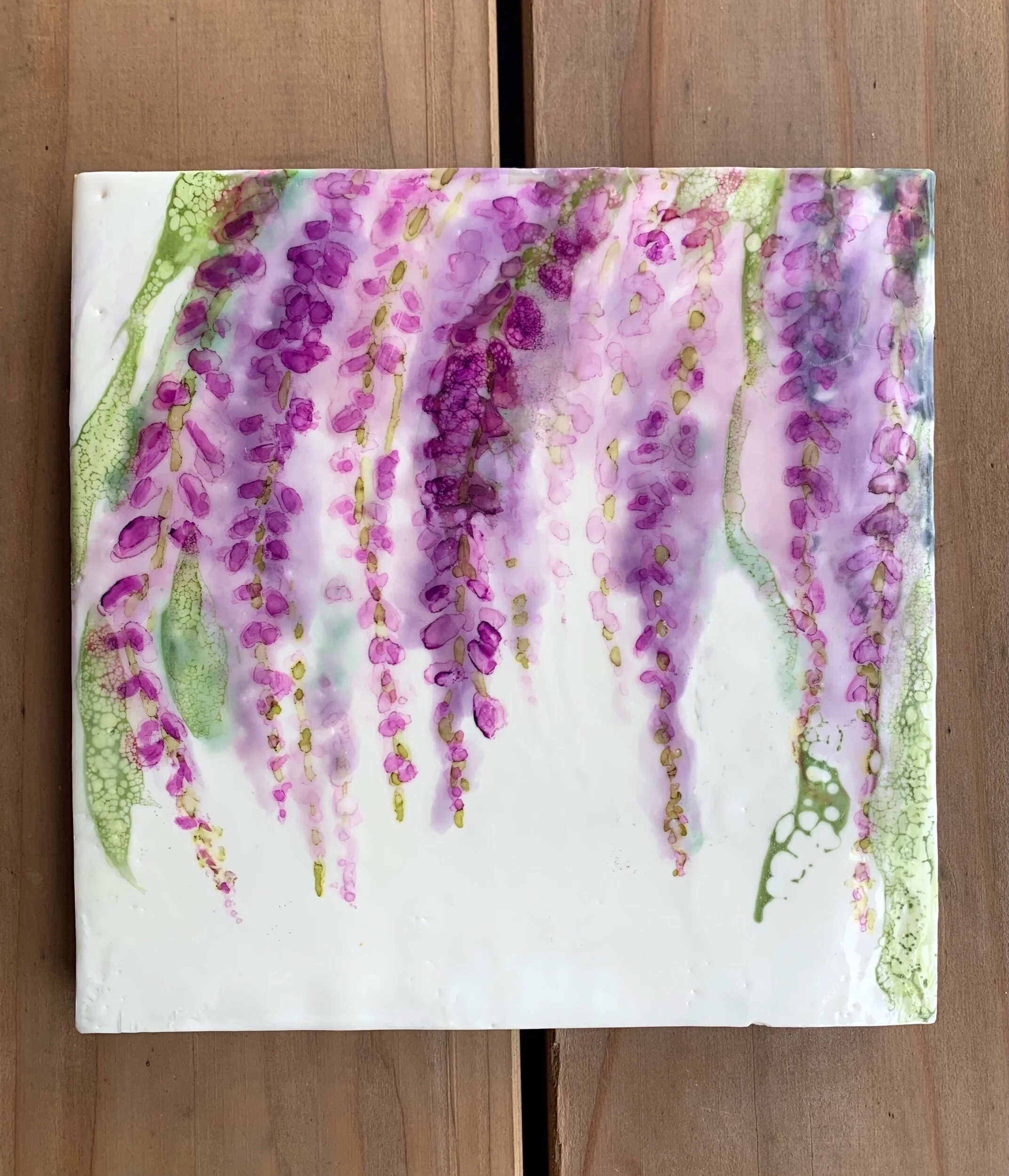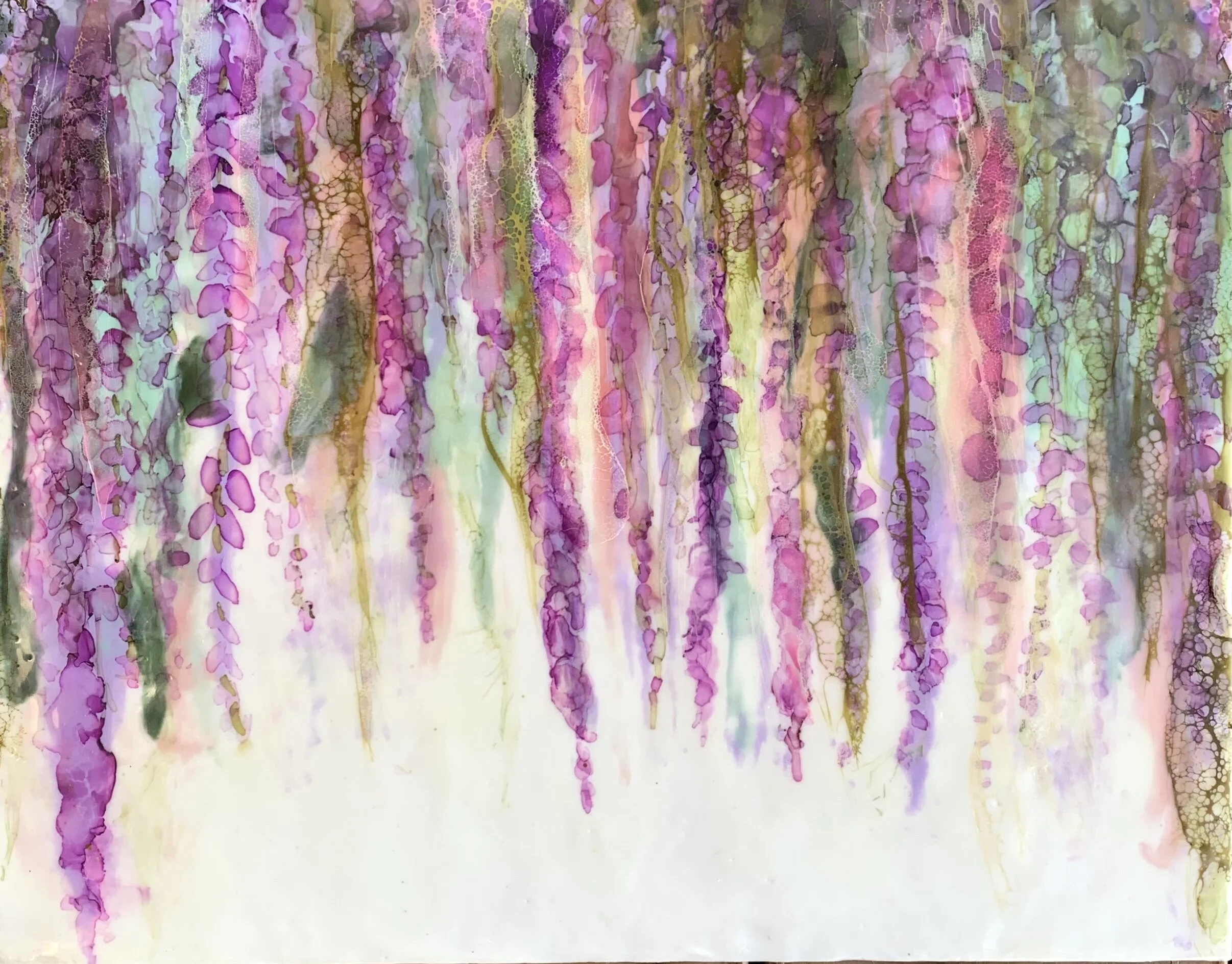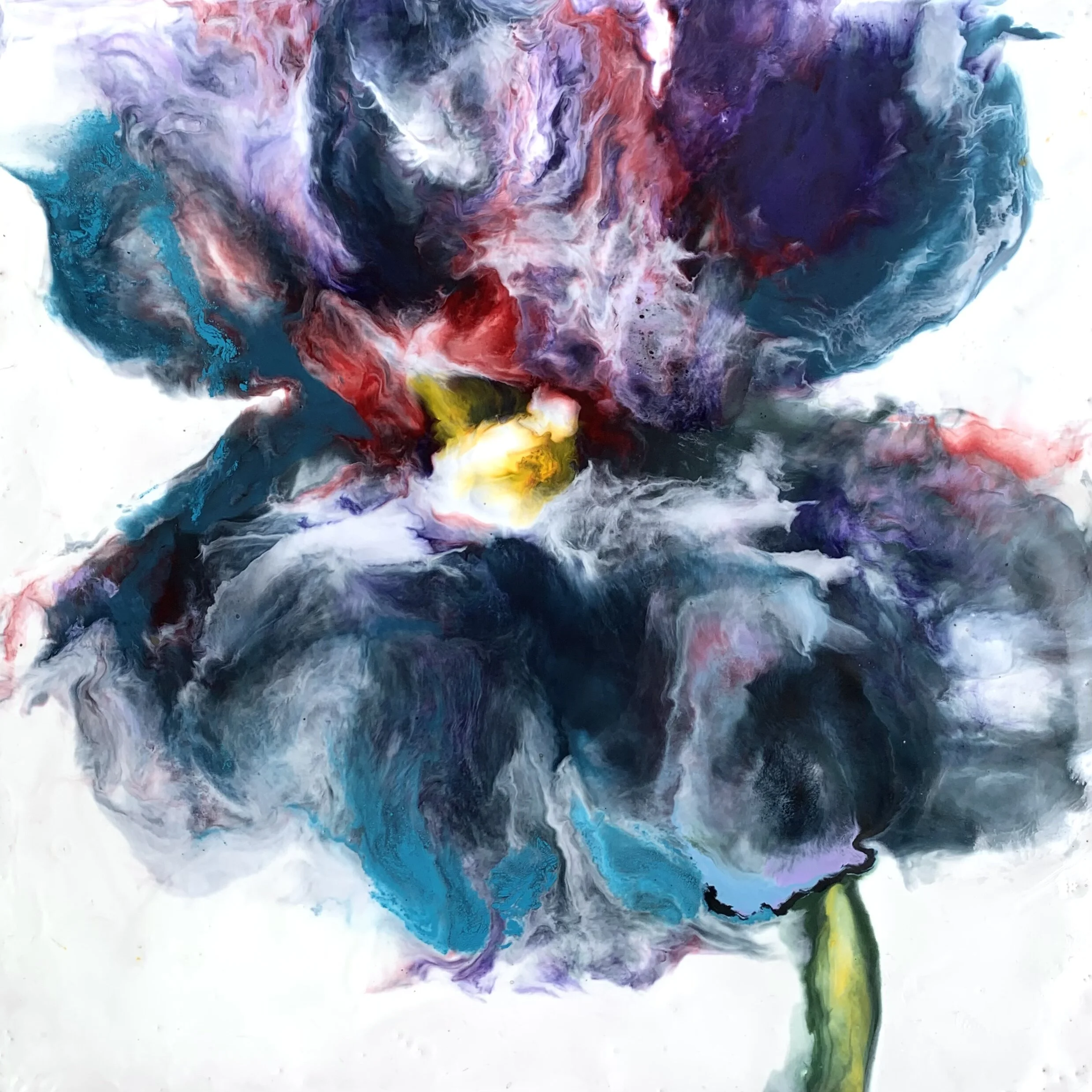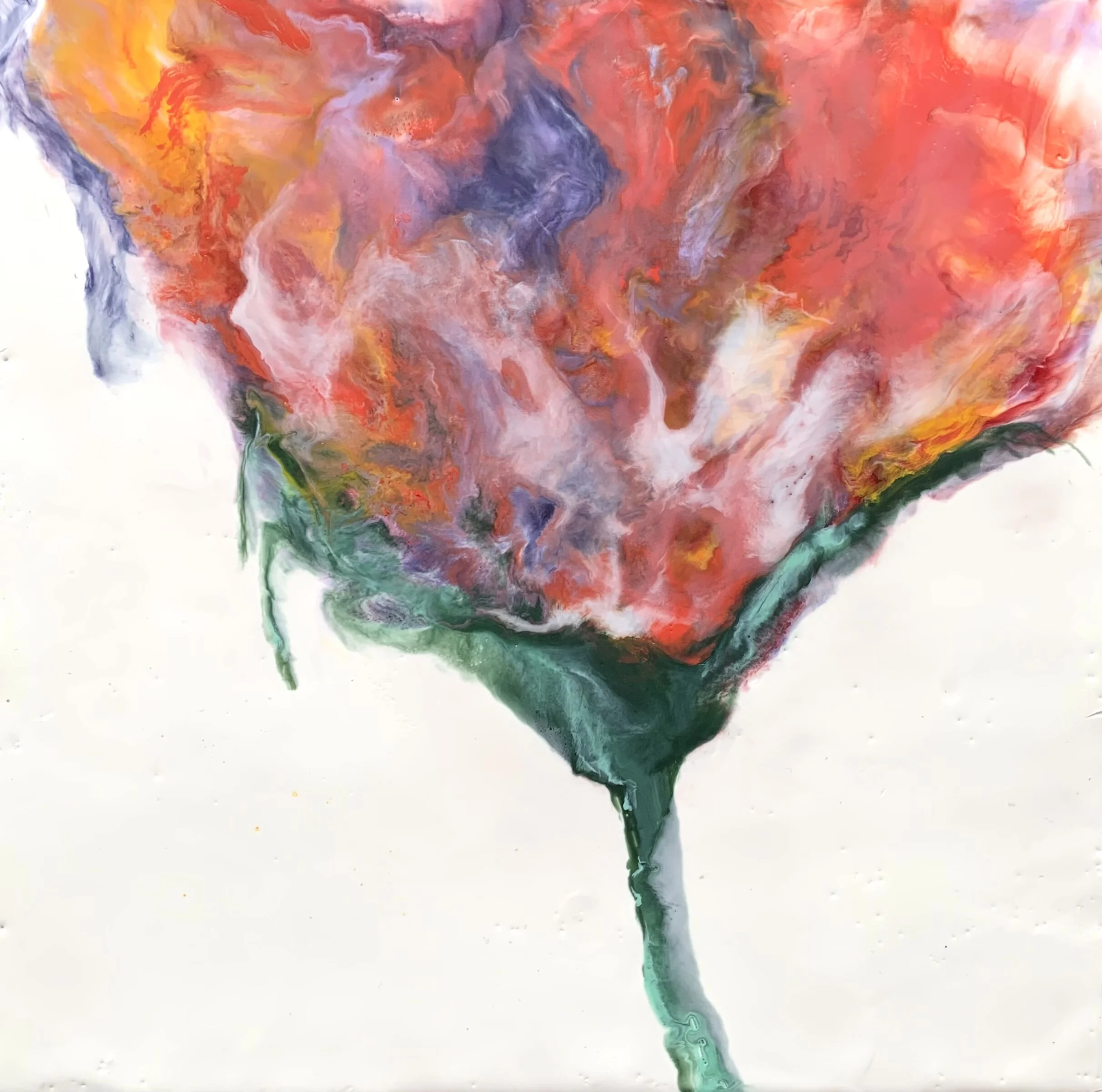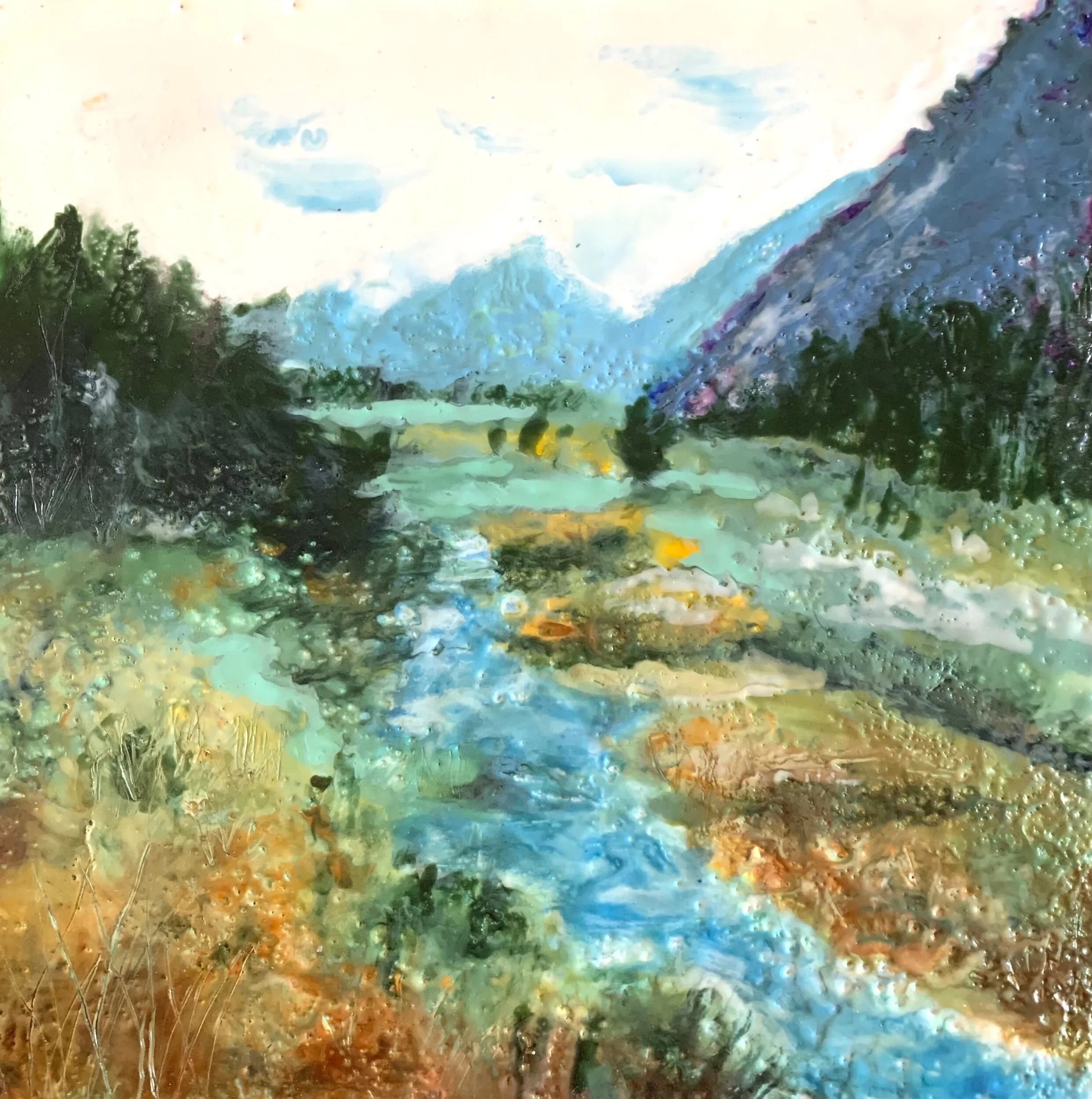Encaustic painting is an ancient technique, Greek painters in Egypt dating back to the 1st and 2nd centuries used it in a variety of ways.
Encaustic medium is made with beeswax, resin and pigments, It is also known as hot wax painting, and it involves a heated wax which is then applied to a hard surface, usually a wood panel, it is then fused with a heat tool such as a torch or heat gun to adhere it to the surface. The palette involves a hot plate to keep the wax medium melted.
My encaustic pieces have multiple layers of encaustic fused to the surface. Layering creates a translucency and radiance that makes the painting seem to glow from within. I start by adding several clear layers and fusing each layer, then apply several white encaustic layers fusing each layer so I have a solid starting point. I then love to use the fluidity of the medium to move the paint around and fusing as I add layers. I then use different tools to scrap away to reveal earlier layers then continue with this process until the piece is complete. I also use alcohol ink on some of the pieces as it adds an interesting aspect to the painting.
These paintings are extremely archival and durable. The beeswax and damar resin are impervious to moisture and will not yellow or darken. The wax and resin will not melt unless exposed to temperatures over 150 degrees Fahrenheit, but as with any art, care should be taken not to expose to extreme temperatures. Encaustics will continue curing or to harden for up to 1-3 years, so they tend to “bloom” or become cloudy over time. Simply rub the surface briskly with a soft cloth to return it to it’s beautiful gloss finish.



